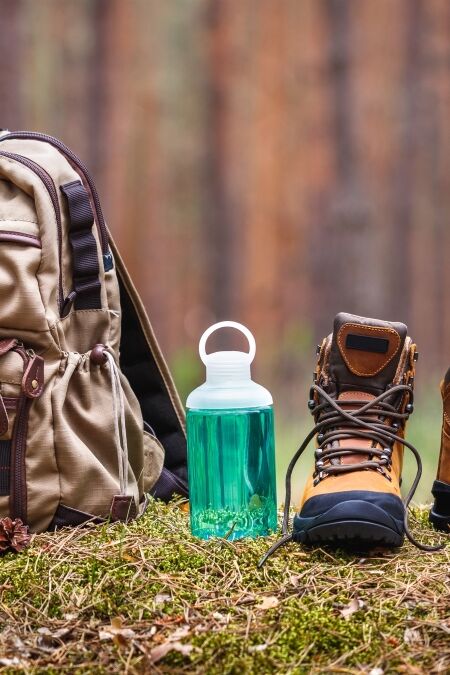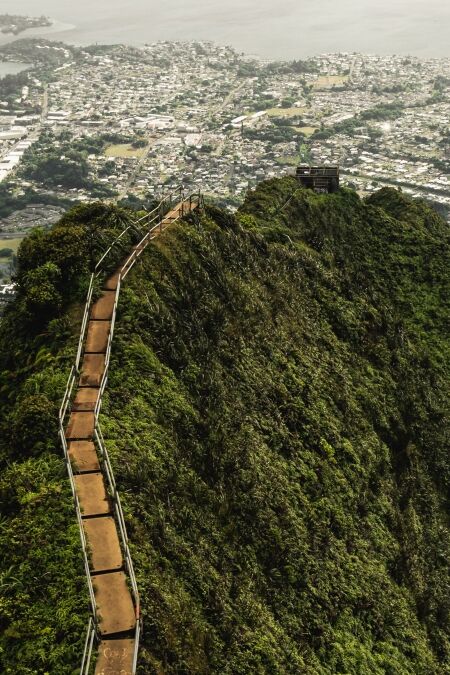Waikiki, renowned for its pristine beaches and vibrant tourist life, also boasts a hidden gem for outdoor enthusiasts—its diverse hiking trails. However, to truly enjoy what these paths have to offer, one must consider the seasonal changes that significantly affect trail conditions. This article provides a month-by-month guide to hiking in Waikiki, recommending the best times of year to explore these trails for optimal conditions. Understanding how each season transforms the landscape is key to a superior hiking experience.
The Climate of Waikiki: An Overview

Waikiki enjoys a tropical rainforest climate that delivers warm temperatures year-round, moderated by pleasant ocean breezes. The area typically experiences two main seasons: a dry season from April to October, and a wet season from November to March. These seasonal shifts play a crucial role in hiking conditions; during the dry season, trails are generally more accessible and offer clear, sunlit views, while the wet season can make paths slippery but lush, with waterfalls and streams at their most vibrant. The varying conditions mean that hikers need to be well-prepared for weather changes, potentially altering which trails are best suited for adventure at different times of the year.
Month-by-Month Guide to Hiking in Waikiki

January
In January, Waikiki’s weather is cooler with average temperatures ranging from 65 to 80°F, and significant rainfall can make trails muddy. Hikers should consider waterproof gear and choose trails like the Manoa Falls Trail, which offers lush scenery enhanced by the rains but may require careful navigation through slippery sections.
February
February sees a slight decrease in rainfall, making trails less slippery and more inviting. It’s an excellent month for experiencing the early bloom of spring flora along the Kuliouou Ridge Trail, where hikers can enjoy panoramic views and vibrant greenery just beginning to flourish.
March
As Waikiki transitions into spring, the weather stabilizes with moderate temperatures and decreased rain. Coastal trails such as the Diamond Head Summit Trail and inland paths like the Makiki Valley Loop Trail are ideal, offering a mix of blooming landscapes and manageable hiking conditions.
April
April marks the onset of the less rainy season, presenting the best conditions for exploring the higher-elevation trails. The Aiea Loop Trail offers a spectacular display of native flora and fauna, with clear views thanks to the drier air.
May
With the approach of summer, May offers warm but not yet hot conditions, perfect for hitting less frequented trails like the Wiliwilinui Ridge Trail. Hikers can enjoy solitude and the vibrant late spring environment before the peak tourist season begins.
June
June introduces the start of summer, bringing warmer temperatures and longer days. This is a great time to explore the Lanikai Pillbox Hike, which provides stunning ocean views and an opportunity to see rare tropical blooms unique to this time of year.

July
In July, the weather reaches its peak warmth, making early morning or late evening hikes more appealing. Night hiking opportunities abound, especially with full moon hikes along the Moanalua Valley Trail, offering a different perspective of Waikiki’s natural beauty.
August
August features the peak of summer heat and humidity, urging hikers to opt for morning excursions on trails like the Tantalus Round Top Drive, known for its shaded paths and cooler forest air which provide a respite from the midday sun.
September
September sees the beginning of the fall transition, with slightly cooler temperatures and changing leaf colors. The Koko Head Crater Trail is spectacular during this month, showcasing the dramatic landscape changes as summer vegetation begins to shift.
October
As cooler temperatures settle in, October is perfect for experiencing the vivid autumn colors on trails such as the Manoa Cliff Trail, where the canopy displays a mixture of tropical and seasonal foliage.
November
With the onset of late fall, November brings cooler and wetter conditions, making it important to prepare for hikes with appropriate rain gear. Trails like the Nu‘uanu Pali Lookout offer historic and cultural insights, as well as dramatic views of the lush, rain-fed surroundings.
December
Early winter in December can be cool and moist, setting the stage for holiday-themed hikes. The Judd Trail to Jackass Ginger Pool offers not only a scenic hike but also festive decorations in nearby communities, creating a unique holiday hiking experience.
Start Your Waikiki Hiking Adventure Today!
Don’t wait to experience the natural wonders of Waikiki’s trails! Use our month-by-month guide to select the best time for your hiking needs, ensuring you encounter the best conditions the area has to offer. As you explore the lush landscapes and breathtaking views, remember to hike responsibly. Respect the environment by adhering to the ‘Leave No Trace’ principles: plan, dispose of waste properly, and leave what you find. By doing so, you help preserve the beauty of Waikiki for future adventurers. Plan your journey today and step into nature’s embrace!




